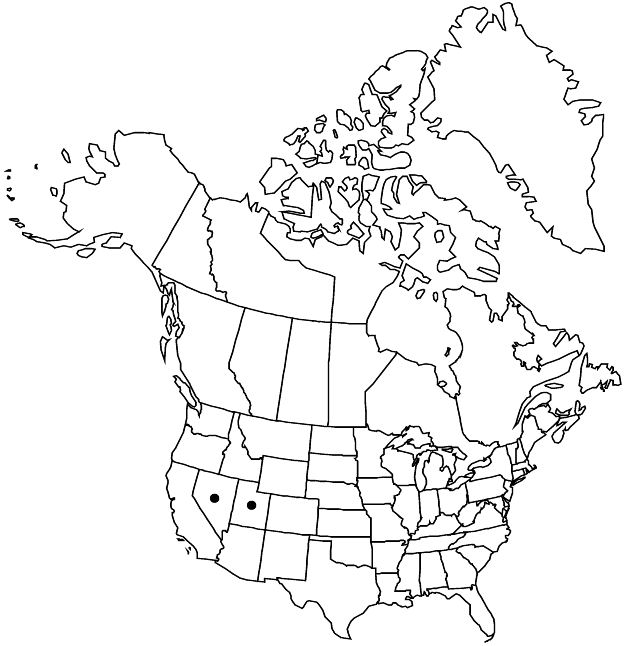Jamesia tetrapetala
Brittonia 41: 348, fig. 3J–K. 1989.
Stems 5–20 (–40) dm. Bark exfoliating in gray, orangish gray, or brownish strips or strings. Branches spreading or descending, often stunted and straggly; twigs densely spreading or retrorse-pilose. Leaves: petiole 1–4 (–7) mm, ascending-strigose to canescent or sericeous; blade ovate or obovate, (0.5–) 1–2 (–2.7) × (0.2–) 0.8–1.2 (–1.6) cm, base obtuse to usually rounded, sometimes cuneate, usually asymmetric, margins usually dentate, rarely entire, teeth 3–13 (–16), apex obtuse to rounded, abaxial surface moderately to densely canescent or sericeous, adaxial sparsely strigose to glabrescent. Inflorescences 1 (–3) –flowered; peduncle 2–10 mm, canescent or subsericeous. Pedicels 1–5 mm, canescent or subsericeous. Flowers: hypanthium 2.5–3.5 × 1–1.5 mm, canescent or sericeous; sepals 4, lanceolate to deltate-ovate, (3–) 5–9 × (1.5–) 2–2.8 mm, margins usually entire, rarely 2-lobed apically, apex acute to obtuse, abaxial surface canescent or sericeous; petals 4, white with pinkish margin or entirely pink, 5–13 (–15) × 3–4.9 mm, sparsely to densely strigose or canescent, especially distally; stamens 8; filaments (4–) 5–8 × 0.8–1.4 mm; anthers 0.8–1.1 mm; styles 3–5, 4.8–7.7 mm. Capsules 3–5.5 (–7) × 2.5–3.5 mm. Seeds 0.6–0.8 mm.
Phenology: Flowering Jun–Aug.
Habitat: Limestone cliffs, crevices, talus.
Elevation: 2000–3300 m.
Distribution

Nev., Utah.
Discussion
Jamesia tetrapetala is known from the Grant, Highland, and Snake ranges in eastern Nevada and the House Range in western Utah.
Selected References
None.
Lower Taxa
"dm" is not declared as a valid unit of measurement for this property."dm" is not declared as a valid unit of measurement for this property."connate" is not a number. "distinct" is not a number.